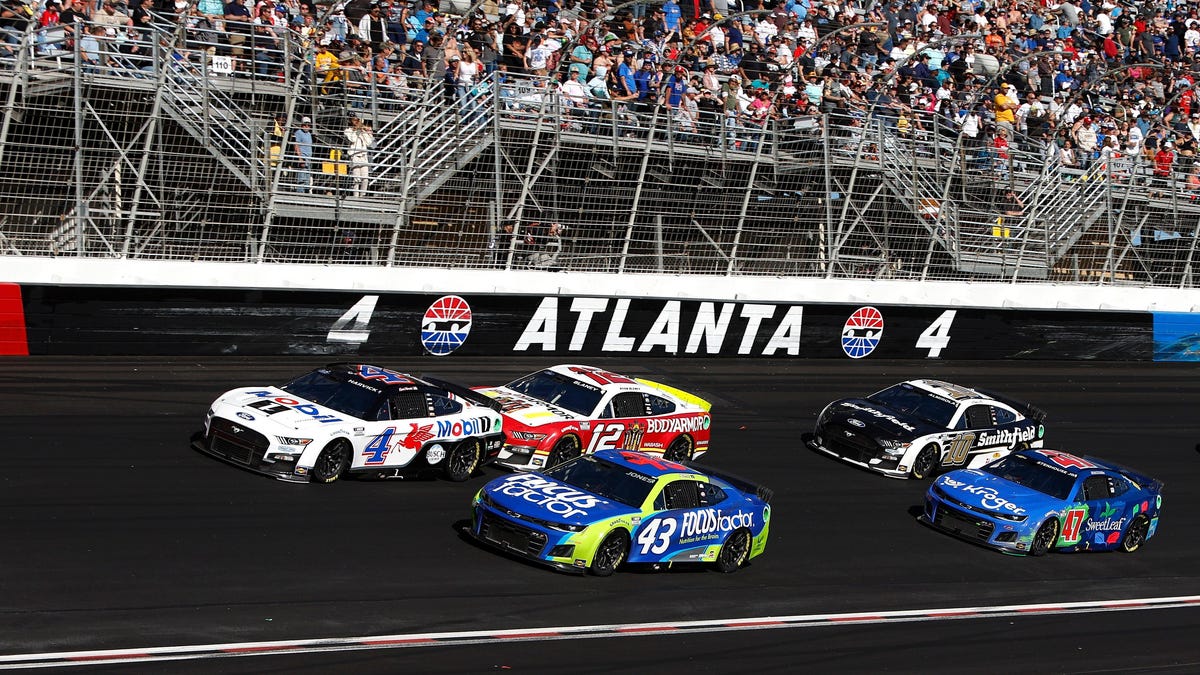How Atlanta Became NASCAR's Newest Superspeedway

Photo: Sean Gardner (Getty Images)
In 1997, Geoff Bodine set the NASCAR Cup Series qualifying speed record for non-restrictor tracks when he won pole position for the NAPA 500, the season-ending race at Atlanta Motor Speedway. Bodine’s pole lap had an average speed of 197.478 mph around the 1.54-mile oval. A large factor in why Geoff Bodine set the record at that particular race is because Atlanta had been recently reconfigured.
Atlanta Motor Speedway used to be a traditional oval, as the track featured two similar radius 180 degree corners connected by two equidistant straights. The venue was reconfigured to feature two dogleg kinks on the new start-finish straight, similar to Atlanta’s sister facilities in North Carolina and Texas. Now, Atlanta’s most recent repave made the track even faster, but it has also ensured that no one will ever break Bodine’s record.
How the new Atlanta Motor Speedway was made
In preparation for its 2022 season, Atlanta Motor Speedway radically reconfigured its track again. The banking of Atlanta’s turns were increased to 28 degrees, from 24 degrees. The front stretch was also widened to better accommodate side-by-side racing. While a four degree increase doesn’t sound that impressive, it’s a significant increase to how much speed a modern stock car could carry through the corners. The increase was significant enough that NASCAR had to effectively reclassify the track.
Since 1988, NASCAR used restrictor plates fitted to engine intakes to limit power output at its two largest tracks, the 2.5-mile Daytona International Speedway and 2.66-mile Talladega Superspeedway. While the measure was implemented to curb dangerously high speeds, the style of racing introduced by the restrictor plates has become almost synonymous with NASCAR. Bunched pack racing, excessive amounts of passing, massive crashes and close finishes are the cornerstones of superspeedway racing. Though, NASCAR has used tapered spacers since 2019 to limit engine power at Daytona, Talladega, and now Atlanta. Atlanta Motor Speedway is now a superspeedway in all terms except length.
Track officials at Atlanta wanted to set itself apart from its 1.5-mile quad-oval sister tracks, except almost none of the Cup Series drivers were consulted about the changes. The drivers, like Denny Hamlin and Chase Elliott, criticized the decision to be left out of the process and stated the reconfiguration would likely cause more crashes.
New Atlanta provides wild finish as field crashes at the line
The NASCAR Cup Series made its first trip to the new Atlanta back in March for the Folds of Honor QuikTrip 500. Things played out exactly as predicted. Pack racing with plenty of passing, huge crashes and a nail-biter finish. It was certainly a different kind of racing for Atlanta. Was it better? It depends on what kind of racing you want to see more of. We’re probably going to see more of the same this weekend as the Cup Series returns to Atlanta for the Quaker State 400.



